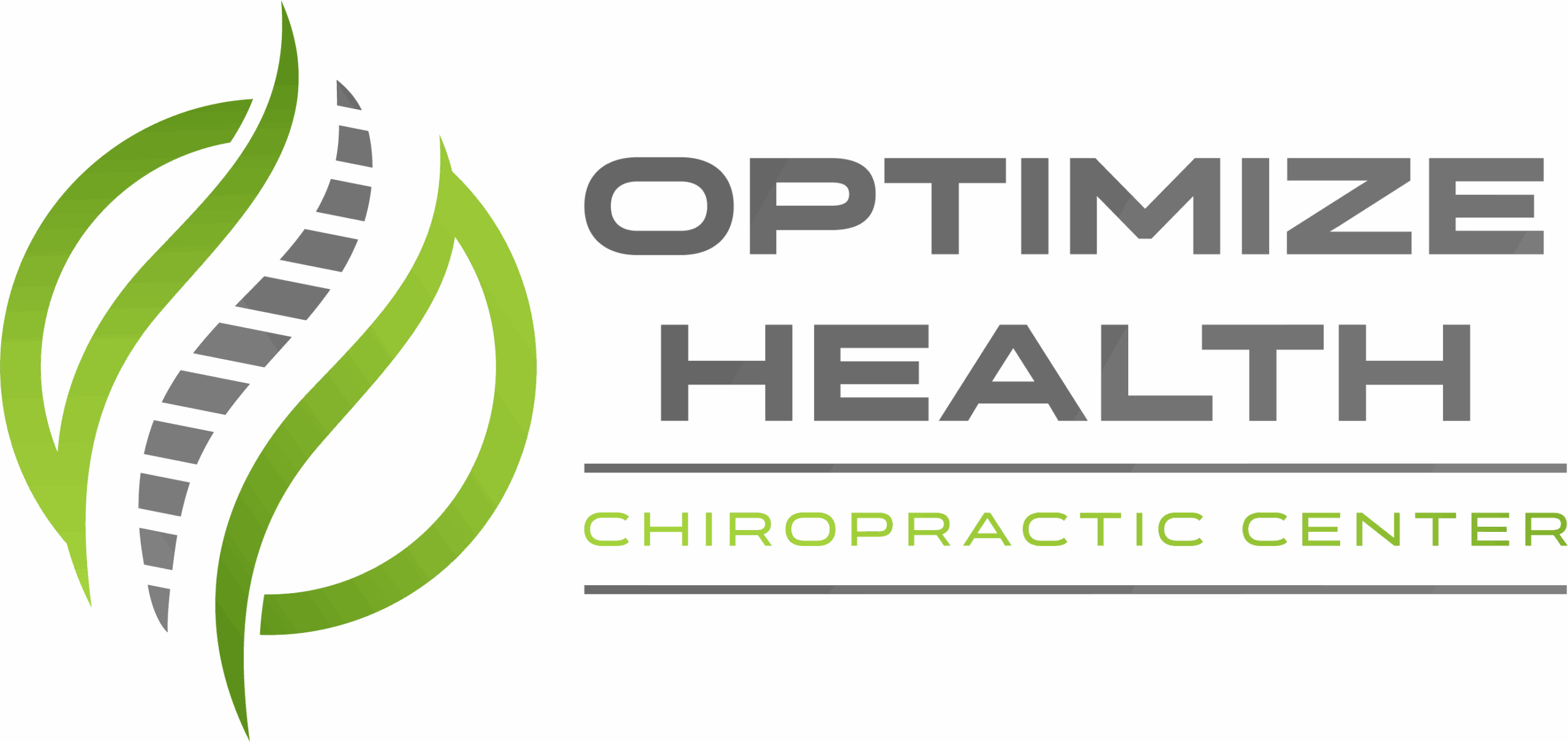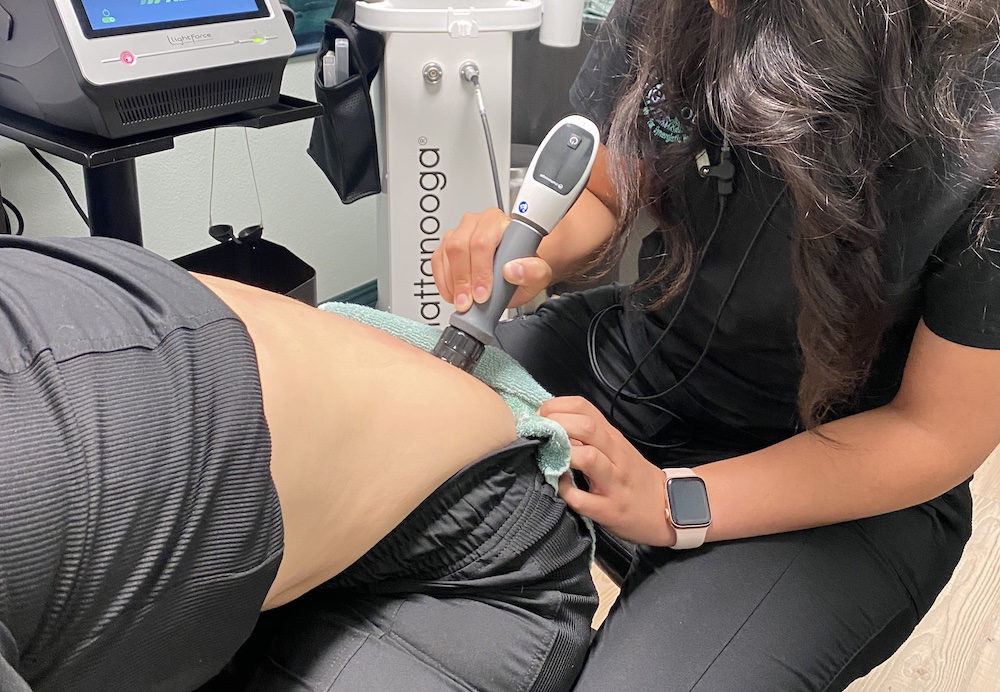As a chiropractor, I want to emphasize the importance of enhancing your flexibility for your overall well-being and physical performance. Many people may not realize how significant flexibility is, but it plays a crucial role in maintaining a healthy body. By incorporating simple techniques such as daily stretching, mindful breathing, and even some beginner yoga practices, you can create a routine that easily fits into your lifestyle.
Flexibility isn't just about reaching your toes; it's about understanding how your body moves and responds to various activities. If you're curious about how to begin this journey and which specific techniques can bring about the best results, I'm here to guide you. Together, we can explore straightforward methods that can significantly improve your flexibility and enhance your quality of life.
Importance of Flexibility
As a local chiropractor, I want to emphasize just how vital flexibility is for your overall health and well-being. Many people may not realize the impact that flexibility has on how our bodies function. When you focus on improving your flexibility, you enhance your range of motion, which allows your muscles and joints to work together more effectively. This increased mobility can significantly enhance athletic performance, making activities like running, jumping, or lifting weights feel more fluid and effortless.
One of the key benefits of flexibility is its role in injury prevention. When your muscles and tendons are pliable, they're less susceptible to strains and tears. By maintaining flexibility, you can reduce the risk of injuries not only during sports but also in everyday activities. Even something as simple as bending down to pick up an object can become safer and more comfortable with improved flexibility.
Additionally, flexibility plays a crucial role in alleviating muscle tension and soreness. When your body is more flexible, your muscles can relax and recover more efficiently, which can help minimize tightness and discomfort. This is especially important if you have a sedentary job or lifestyle, where prolonged sitting can lead to stiffness.
Another important aspect to consider is how flexibility contributes to better posture. When muscles are tight, they can pull your body out of alignment, leading to discomfort and long-term issues. By incorporating flexibility exercises into your routine, you can help maintain proper posture, which supports a healthier spine and overall body alignment.
Incorporating flexibility into your daily routine is essential for enhancing your wellness and performance, and it's a key focus in chiropractic care. Don't underestimate the importance of flexibility—it's a fundamental aspect of achieving optimal health.
If you're interested in learning more about how flexibility and chiropractic care can work together for your well-being, feel free to reach out.
Daily Stretching Routines
As a chiropractor dedicated to promoting natural healing and overall wellness, I want to emphasize the importance of incorporating a daily stretching routine into your life. Many patients are surprised to learn how just a few minutes of stretching each day can significantly enhance flexibility, improve range of motion, and boost muscle elasticity. Finding the right time to stretch—whether it's in the morning, during your lunch break, or before bed—can make a tremendous difference in your overall well-being. Consistency is vital in reaping the benefits of stretching.
To start, it's essential to warm up your muscles with dynamic stretches. Simple movements such as arm circles, leg swings, and torso twists can effectively prepare your body for deeper, more focused stretches.
Once your muscles are warmed up, transition to static stretches, holding each position for 15 to 30 seconds. Prioritize major muscle groups like your hamstrings, quadriceps, hips, shoulders, and back, as these areas often hold tension and can benefit from increased flexibility.
To create a well-rounded routine, consider targeting different muscle groups on different days. For example, you might focus on your lower body one day and your upper body the next. This method not only helps prevent overexertion but also allows your muscles to recover properly.
It's crucial to listen to your body during your stretching routine. Stretching should feel comfortable and relieving, not painful. If you come across tightness, ease into the stretch rather than pushing too hard.
Exploring various stretches can keep your routine fresh and exciting, so don't hesitate to try new techniques or poses.
Finally, I encourage you to track your progress. Documenting the improvements in your flexibility over time can be incredibly motivating and rewarding. With a commitment to daily stretching, you'll soon discover the profound benefits of enhanced flexibility, which can positively impact your daily activities and overall health.
Mindful Breathing Techniques
As a local chiropractor, I want to share how mindful breathing techniques can significantly benefit your flexibility and overall well-being. By incorporating deep belly breathing into your routine, you can promote relaxation and reduce tension in your muscles.
Another effective method is box breathing, which involves inhaling, holding, exhaling, and pausing for equal counts. This technique can help calm your nervous system and enhance your focus during your flexibility practice.
Additionally, guided visualization techniques can deepen your mind-body connection, allowing you to visualize yourself in a more relaxed and flexible state.
By integrating these mindful breathing practices into your daily life, you can't only improve your flexibility but also support your chiropractic care and natural healing journey.
Let's explore how these methods can work together to help you achieve a more balanced and flexible body.
Deep Belly Breathing
As a chiropractor dedicated to promoting holistic health, I want to share with you the incredible benefits of deep belly breathing. This technique isn't just about relaxation; it plays a vital role in enhancing both your mental and physical well-being. By engaging your diaphragm, you allow your lungs to fully expand and take in more air, which is essential for optimal health.
To get started, find a comfortable position, whether you're sitting in a chair or lying down on your back. Place one hand on your chest and the other on your belly. As you take a deep breath in through your nose, focus on feeling your belly rise while keeping your chest relatively still. This practice encourages deeper breaths and taps into your body's natural relaxation response.
When you exhale slowly through your mouth, let your belly fall. Try to establish a calming rhythm: inhale for a count of four, hold that breath for a count of four, and then exhale for a count of six. As you continue with this practice, you may notice your mind becoming clearer and your body relaxing more deeply.
Not only does deep belly breathing help to reduce stress, but it also enhances the flow of oxygen to your muscles, which is crucial for flexibility and overall energy levels.
I encourage you to incorporate deep belly breathing into your daily routine, especially before stretching or engaging in any physical activity. By doing so, you'll feel more centered, focused, and prepared to face daily challenges.
Box Breathing Method
As a chiropractor dedicated to promoting holistic health and wellness, I want to share a powerful technique that can significantly enhance your mindfulness and relaxation: the Box Breathing Method. This approach pairs beautifully with the benefits of deep belly breathing, helping to calm both your mind and body, which is essential in supporting your overall health.
Here's how you can practice this effective technique:
- Inhale: Begin by taking a deep breath in through your nose for a count of four. Make sure to fill your lungs completely, allowing the air to expand your belly.
- Hold: After inhaling, hold that breath for another count of four. This pause allows the oxygen to thoroughly nourish your body.
- Exhale: Now, slowly release the breath through your mouth for a count of four. As you do this, imagine letting go of any tension or stress you may be holding on to.
Repeat this cycle for at least four rounds. You'll notice that this structured practice not only enhances your focus but also helps reduce stress and anxiety.
By grounding yourself in the present moment, you create a mental space that fosters clarity and peace, which is vital for your well-being.
Whether you're preparing for a busy day filled with activities or winding down at night, incorporating the Box Breathing Method into your routine can be a valuable addition to your natural healing toolkit.
I encourage you to give it a try and observe how it positively impacts your overall health and well-being. Remember, mindful breathing is an important aspect of maintaining not just physical health, but emotional balance as well.
Guided Visualization Techniques
Incorporating guided visualization techniques into your wellness routine can significantly improve your relaxation and focus, which is essential for maintaining spinal health and overall well-being. These techniques involve harnessing your imagination to create vivid mental images that promote a sense of calm.
To start, find a quiet space where you can sit or lie down comfortably. Close your eyes and take a few deep breaths, allowing your body to relax and settle into the moment.
Next, envision a serene setting—such as a peaceful beach, a tranquil forest, or a lofty mountain top. Engage all your senses: listen to the gentle waves, feel a soft breeze on your skin, or breathe in the scent of fresh pine. This mental imagery serves to distract your mind from everyday stressors, allowing for a deeper immersion in relaxation, which can ultimately support your chiropractic care.
To enhance this experience, consider combining visualization with mindful breathing. As you inhale, visualize drawing in positive energy that nourishes your body. As you exhale, imagine releasing any tension or negativity that may be affecting your spine and overall health.
Regular practice of guided visualization can significantly contribute to your physical and mental flexibility, which is crucial for maintaining a healthy spine. It fosters a more positive mindset, making it easier to face life's challenges with clarity and calmness.
I encourage you to integrate this powerful technique into your daily routine, and you may notice how it complements your chiropractic care and enhances your overall wellness journey.
Incorporating Yoga Practices
As a local chiropractor, I often emphasize the importance of integrating holistic practices, such as yoga, into your wellness routine.
Yoga can significantly improve your flexibility and body awareness, which are crucial for maintaining a healthy spine and overall well-being. Here are three effective yoga techniques that can complement chiropractic care and enhance your body's natural healing:
1. Sun Salutations: This dynamic sequence serves as an excellent warm-up for your body while stretching key muscle groups.
Begin with Mountain Pose to establish a solid foundation, then flow through Forward Bend, Plank, and Downward Dog. Repeating this sequence helps build strength and increases flexibility, which can support your spinal health.
2. Pigeon Pose: This pose is particularly beneficial for releasing tension in the hips and lower back, areas often affected by misalignments.
From Downward Dog, bring one knee forward behind your wrist and extend the opposite leg straight back. Holding this position for several breaths allows you to release tightness, which can aid in maintaining proper alignment. Remember to switch sides for balanced benefits.
3. Cat-Cow Stretch: This gentle flow between these two poses is fantastic for enhancing spinal flexibility.
Position yourself on all fours, and alternate between arching your back (Cat) and allowing it to sag (Cow). This rhythmic movement not only promotes flexibility but also encourages relaxation, helping to reduce stress on your spine.
Incorporating these yoga practices into your routine can enhance the benefits of chiropractic adjustments, leading to a more balanced and healthier body.
Always consult with your chiropractor to tailor these practices to your individual needs.
Benefits of Dynamic Movements
As a local chiropractor, I want to share the incredible benefits of incorporating dynamic movements into your routine, especially when it comes to enhancing your overall health and well-being. Unlike static stretching, which may leave your muscles feeling tight, dynamic movements serve to warm up your muscles effectively while simultaneously improving your flexibility and range of motion. This is crucial for preparing your body for physical activities, as it increases blood flow and activates your muscles, allowing you to feel more agile and ready for whatever challenges lie ahead.
When you make dynamic movements a part of your daily practice, you're not just working on your flexibility; you're also building strength. Exercises such as leg swings, arm circles, and torso twists engage various muscle groups, promoting coordination and stability. This multi-muscle engagement not only makes your workouts more effective but also helps to create a balanced body, which is essential for both injury prevention and optimal function.
Additionally, dynamic movements can significantly enhance your athletic performance. By developing functional strength through these exercises, you'll find that everyday activities, as well as sports, become easier and more efficient. For example, mastering a proper lunge can improve your balance, enabling you to change directions swiftly and effectively during physical activities.
Another important aspect to consider is injury prevention. Engaging in dynamic movements increases your awareness of your body's limits, which can help you avoid overstretching or straining your muscles. This heightened awareness is particularly beneficial during high-intensity workouts or sports that require quick movements and changes in direction.
Incorporating dynamic movements into your warm-up routine is an excellent step towards ensuring your body is primed for activity. As your chiropractor, I encourage you to start introducing these movements into your life today. Your body will thank you for it, and you'll be on a path to better health and enhanced physical performance!
Tips for Staying Consistent
Staying consistent with your flexibility routine can be a challenge, especially when life gets hectic. However, incorporating flexibility into your daily life is essential for overall health and wellness, and it doesn't have to feel overwhelming. Here are some tips to help you integrate flexibility exercises into your routine, which can complement your chiropractic care and enhance your natural healing journey.
1. Set Clear Goals: As your chiropractor, I encourage you to define what you want to achieve through your flexibility routine. Whether it's enhancing your range of motion, alleviating tension, or preventing injuries, having specific goals will motivate you to stay engaged. Consider writing these goals down and revisiting them regularly to track your progress and remind yourself of the benefits.
2. Create a Schedule: Just like your chiropractic appointments, treat your flexibility sessions as important engagements. Allocate dedicated time each week for these exercises and adhere to that schedule. Whether it's a brief 10-minute routine in the morning or a more extended session in the evening, consistency is vital for your body's adaptation.
Utilizing reminders on your phone or calendar can help reinforce your commitment.
3. Make it Enjoyable: It's important to find flexibility activities that you genuinely enjoy. I recommend exploring various stretching techniques or yoga classes to discover what resonates with you. When you find joy in your routine, you're more likely to stick with it.
Additionally, consider joining a class or working with a partner; having a buddy can provide accountability and turn your flexibility practice into a social and enjoyable experience.
Listening to Your Body
As a chiropractor, I want to emphasize the importance of listening to your body when it comes to improving your flexibility. Your body has its own way of communicating its limits and needs, and being attuned to these signals can help prevent injuries while supporting your progress.
When you engage in stretching exercises, pay close attention to how your muscles respond. If you encounter sharp pain or significant discomfort, it's essential to ease back. The goal is to feel a gentle stretch, not to push yourself into overwhelming strain.
It's also crucial to consider your energy levels. On days when you feel fatigued or sore, it may be beneficial to modify your routine. Rather than forcing your body to comply, opt for lighter stretches or take a rest day. This approach doesn't mean you're giving up on your flexibility goals; rather, it's about respecting your body's signals and allowing it the necessary time to recover and heal.
Before you dive into your flexibility exercises, ensure you warm up properly. A few minutes of light cardio or dynamic stretches can effectively prepare your muscles and joints, making them more receptive to the demands of stretching.
After your stretching session, take a moment to reflect on how your body feels. Are there specific areas that require more attention? Adjust your routine accordingly by focusing on tight spots and ensuring a balanced approach to your flexibility training.
Remember, flexibility isn't something that improves overnight; it takes time and consistency. Celebrate the small victories along the way, and remember to be patient with yourself. Each session presents an opportunity to learn about your body's unique needs.
Conclusion
As a local chiropractor, I'm here to share some valuable insights on how you can enhance your flexibility and overall well-being through natural methods. Incorporating simple techniques into your daily routine can make a significant difference. Start with dynamic stretches as they effectively warm up your muscles and prepare your body for movement.
Mindful breathing is another essential practice; it not only calms the mind but also promotes better oxygen flow to your muscles. Additionally, consider integrating yoga into your routine. This practice deepens your body awareness and encourages a strong connection between your mind and body.
Embracing dynamic movements is key, but consistency is crucial. Always listen to your body and make adjustments as needed. With dedication and a patient approach, you will experience improved flexibility and an enhanced sense of well-being. I encourage you to start implementing these techniques today and observe the positive changes in your body!



